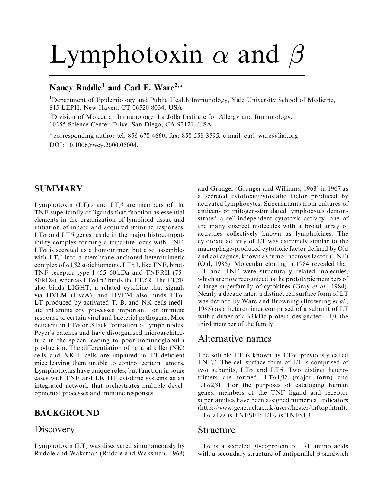Ruddle N., Ware C.F.
Lymphotoxin (LT)α and LTβ are members of the TNF superfamily of ligands that function as essential elements in the organization of lymphoid tissue and initiation of innate and acquired immune responses. LTα and LTβ genes reside in the major histocompatibility complex forming a tripartite locus with TNF. LTα is secreted as a homolrimer, but also assembles with LTβ into a membrane-anchored heterotrimeric complex of a αlβ2stoichiometry. LTα3, like TNF, binds TNF receptor type I (55-60kDа and TNFRII (75-80 kDa). whereas LTα1β2 binds the LTβR. The LTβR also binds LIGHT, a related cytokine that signals via HVEM (HveA). and HVEM also binds LTα. LT produced by activated Т. В. and NK cells mediate inflammatory processes important for immune response to certain viral and bacterial pathogens. Mice deficient in LTα or β lack formation of lymph nodes. Peyers patches and have disorganized microarchitecture in the spleen leading to poor immunoglobulin production. The differentiation of natural killer (NK) cells and NK-T cells are impaired in LT-deficient mice leaving them unable to control certain tumors. Lymphotoxins have unique roles, but function in some cases with TNF and LIGHT cytokine systems as an integrated network that orchestrates multiple developmental processes and immune responses. | |







Reviews
There are no reviews yet.